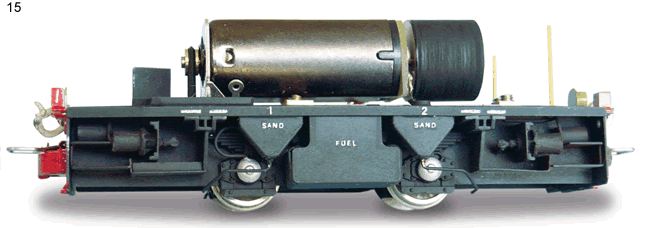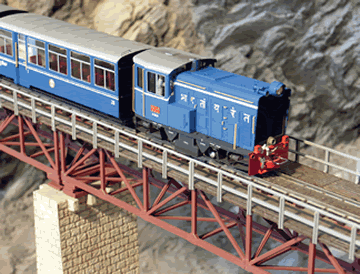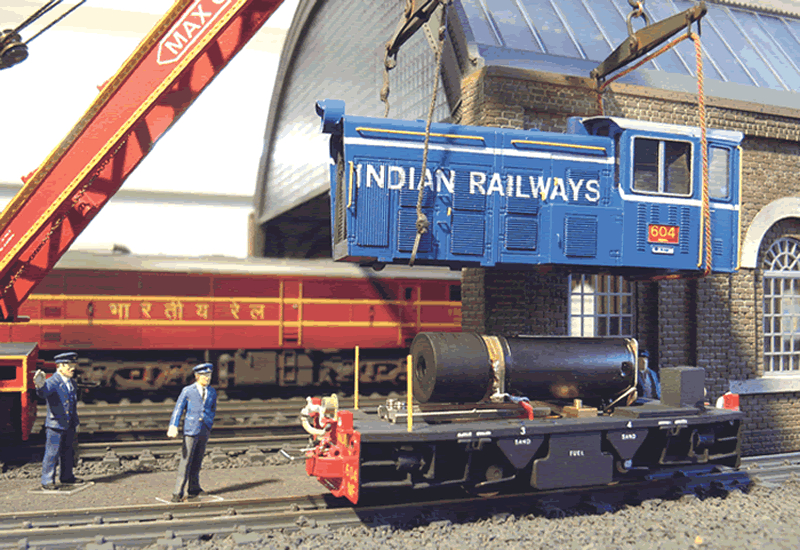

 |
 |
|
15. The
painted and |
water makes correct placement
of decals that size very difficult. In the end ‘near enough’ was definitely
good enough. The power unit was fitted into the chassis at this stage. Painting the body was also simplified by having it separate from the footplate, avoiding the need to tackle the difficult join between the body colour and the footplate. I had obtained some blue paint from the Darjeeling Himalayan Railway’s workshops at Tindharia on a previous visit, so I used this with a view to nominal authenticity. (The shade of blue used by the DHR seems to vary periodically, so any authenticity is somewhat transient!) I had no clue as to the type or origin of the paint, but I thinned it with lacquer thinners and it sprayed beautifully and gave an excellent gloss finish. The lettering for INDIAN RAILWAYS was done using |
locomotive maker’s plate had to be done by hand. For the silver trim around the cab side windows, a draughtsman’s bow pen was used. Conclusion A test run showed that the weight of the finished unit was quite sufficient for traction purposes without any added weight being needed, though there is ample space in the body for this. As I had opted for a belt drive, it was important not to overdo the weight, or the belt life could be reduced. However, the belts used by Hollywood Foundry are quite durable (and a spare is supplied with the ‘Bullant’). The NDM6 is a soundly designed little diesel of classic appearance
which has proved itself well suited to the demanding conditions on the
Indian 2' gauge lines. The Worsley Works body kit does full justice
to this charming locomotive, and the extra time needed to make a correspondingly
accurate chassis is, I feel, very well spent. |
| Right Another look at the chassis and mechanism courtesy of the broad gauge breakdown crane. The diesel loco in the background, by the way, is an Alco ‘World’ series unit, converted to Indian WDM1 from an old Lima model of a New South Wales 44 class, but that is another story! |
 |
|
|
|
||
|
References The Iron Sherpa, |
||
| December 2010 | 805 | |
|
|
||